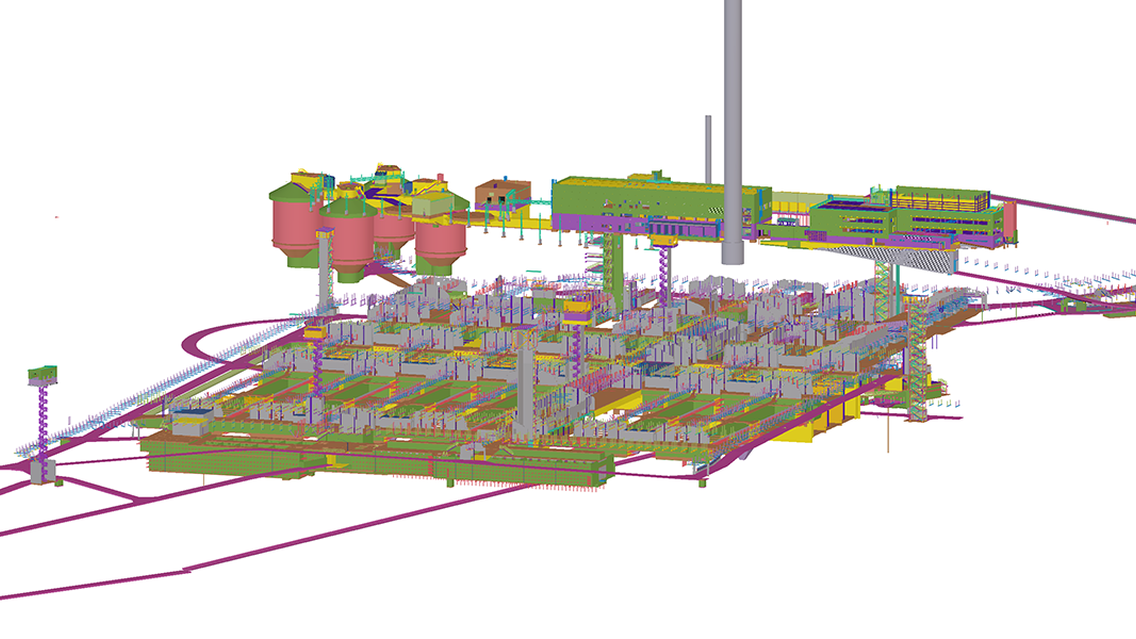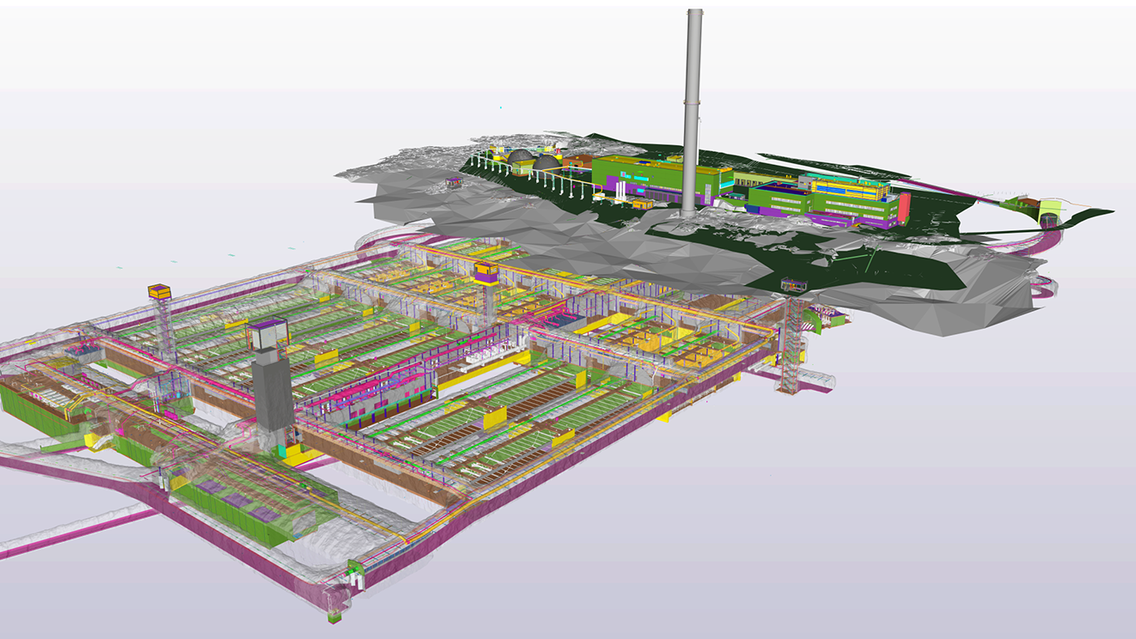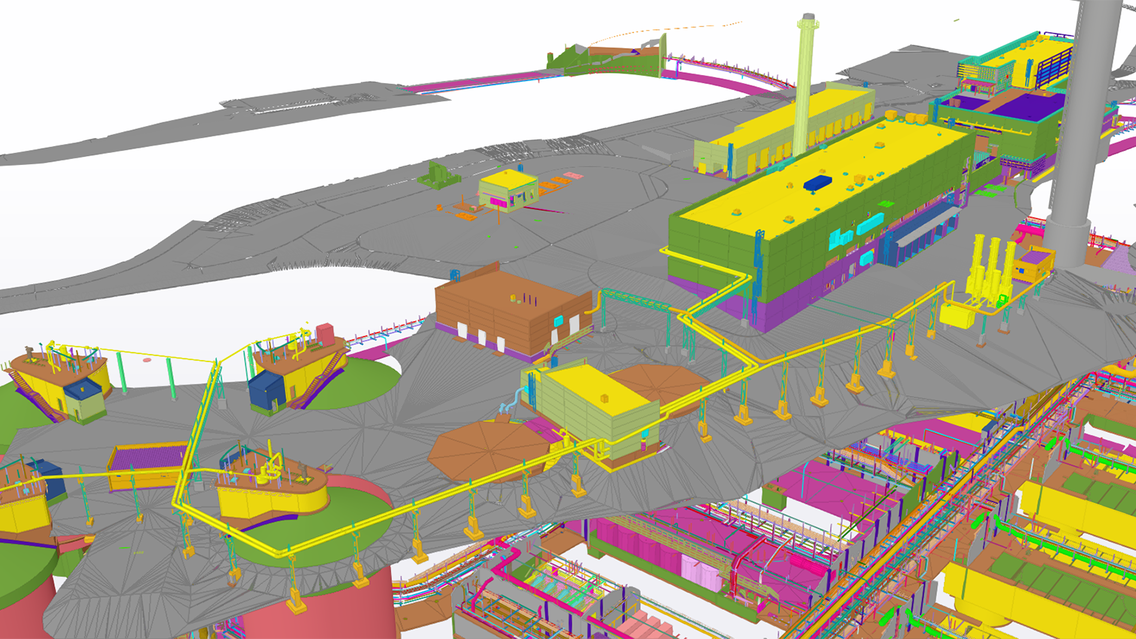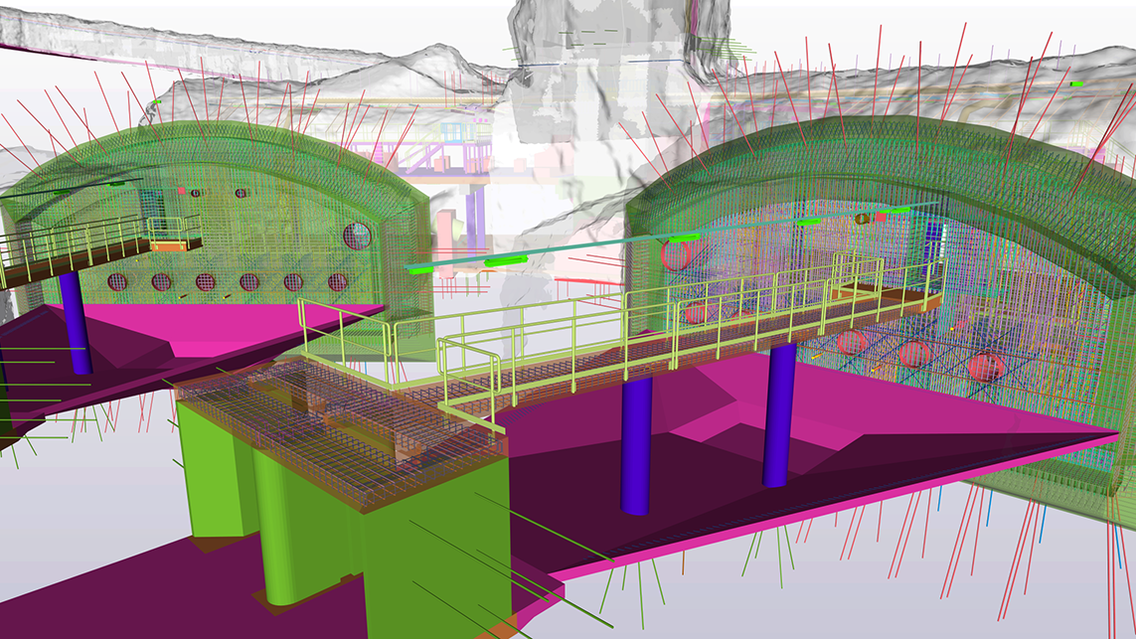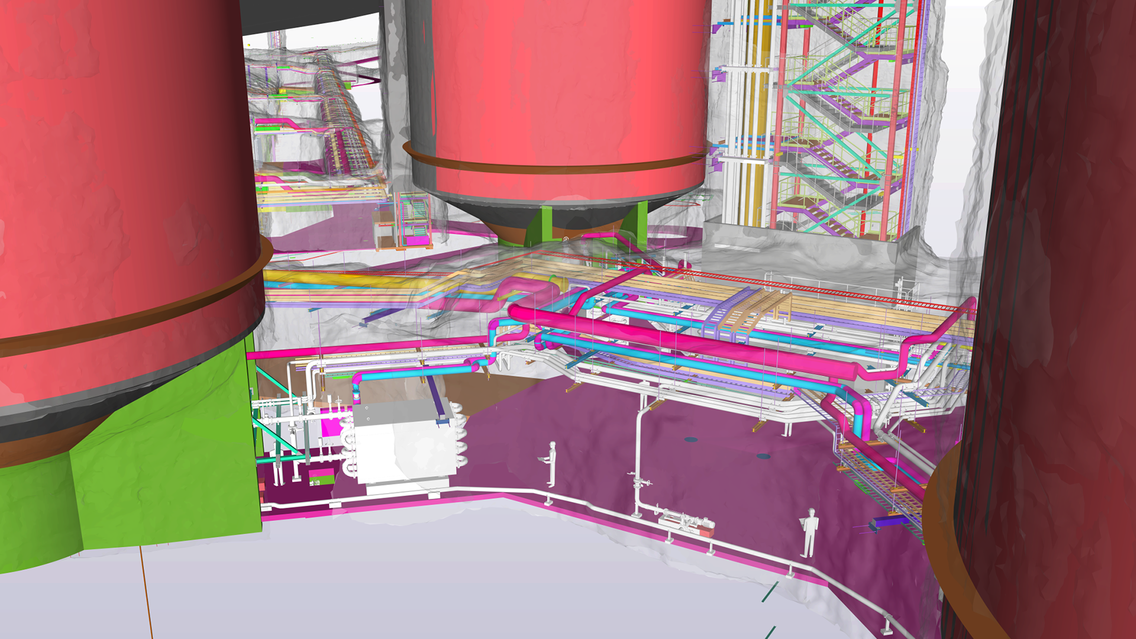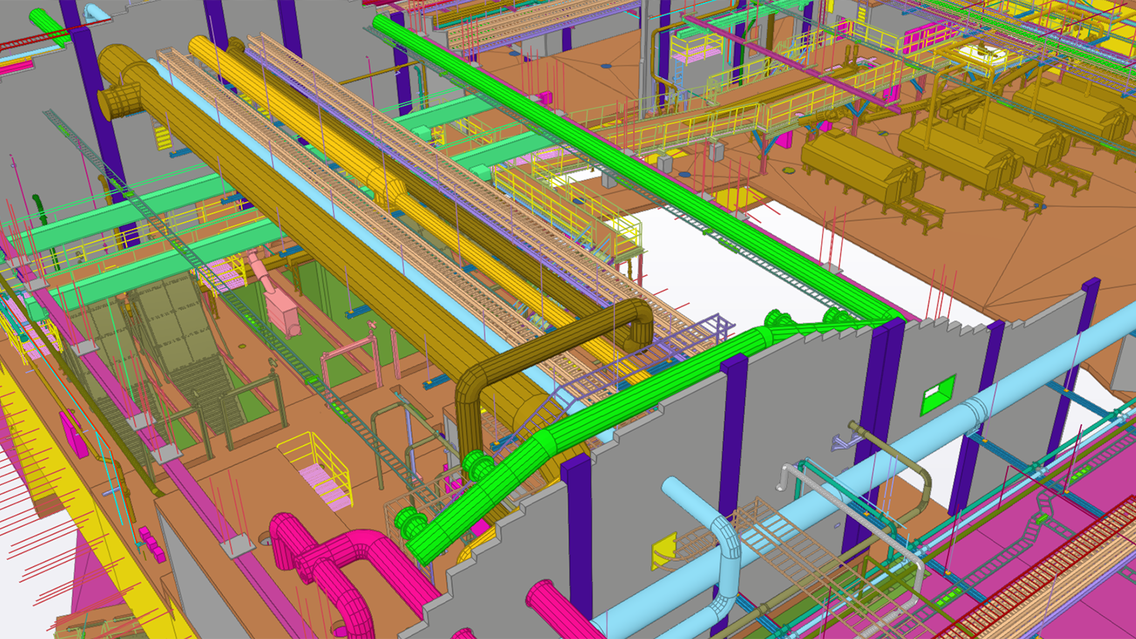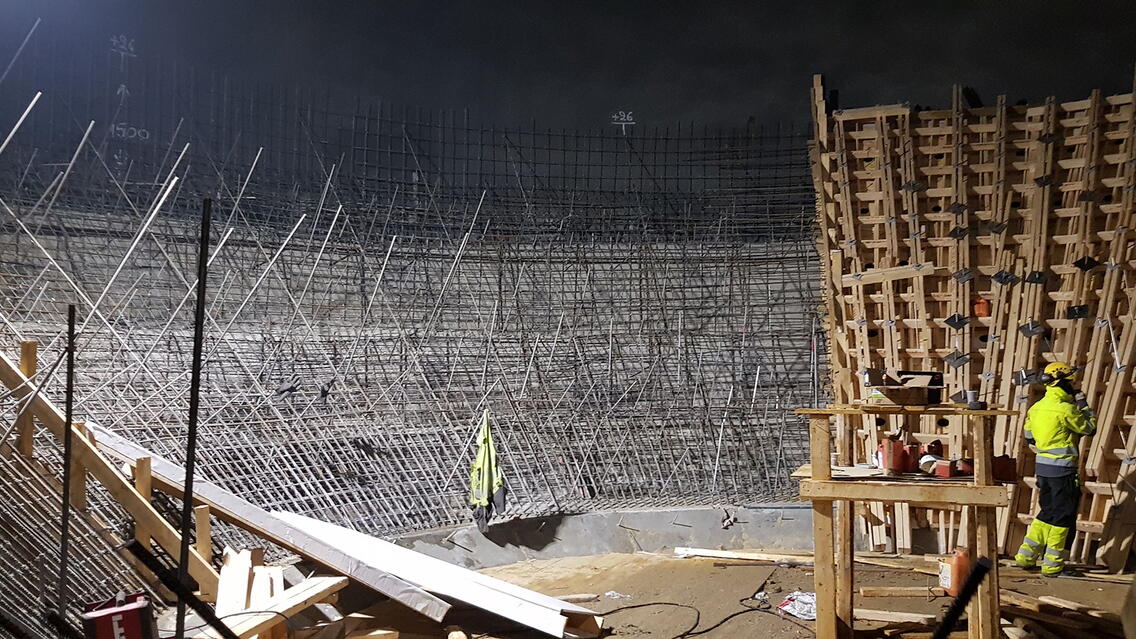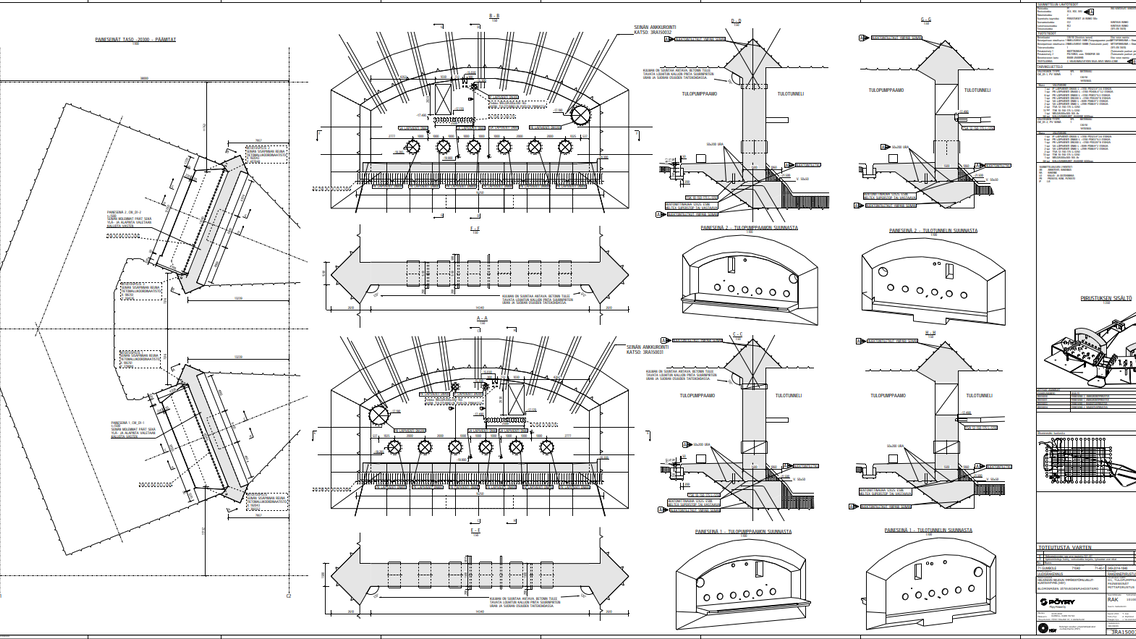Design of the most productive wastewater treatment plant in the Nordics involved vast data management capacity
The new wastewater treatment plant to be built in Blominmäki, Espoo, will be the most productive of its kind in the Nordics: it will remove up to 99% of phosphorus from the water.
In the way of Nordic construction, a cave complex of more than ten hectares is excavated underground for the plant and its reservoir. Excavation of wastewater drains started in 2014, and pilot use of the plant will commence in 2021. The project was manifold, challenging and interesting to design.
A major challenge was the vast amount of data involved in the project and managing this data. Carrying out the design process would have been extremely challenging without BIM. An array of modeling software was used by the design disciplines, including Tekla Structures (2017), Trimble Connect and Trimble RealWorks.
The project consists of 93,000 m3 of concrete, 9,000,000 kg of reinforcing bars, and 1,500,000 kg of structural steel. The plant includes a slip-cast exhaust tower of 98 m and 12 km of air ducts. The deepest point of the plant is at -23.300 and highest at +143.500.
AFRY Finland provided architectural, structural, electrical and instrumentation design, regional planning and rock engineering for the project. All source data originates in the models of various disciplines exchanged in IFC, STEP, 3D DWG and LandXML format. AFRY used their own custom components and plugins in precast concrete detailing, including bolted and ADK bracing connections.
Various combination models for various purposes
Structural design for the project was completely BIM-based, and in many aspects the structures were modeled in more detail compared to the level of detail specified in the Finnish COBIM (Common BIM requirements).
Precast unit supplier Parma used Model Sharing to review production planning and detailing and obtained all dimensions for manufacturing thin-shell and hollow-core slabs directly from the model. The Excel reports for production planning were created with the Model Organizer tool. IFC files were used for producing precast unit quantities during bidding and lists of formwork accessories for the wall elements for the shop order.
Autodesk Robot Structural Analysis Professional and RFEM software were used to perform structural analysis and calculations. Stair tower files were transferred from Tekla to Robot Structural, and grid geometry from below the biogas building was transferred from Robot Structural to Tekla for modeling. The client received both the drawings and the building information model.
Each project party published their BIM for review by other designers weekly. There were various combination models in use for various purposes. The architect and the structural designer exchanged design information mainly by exchanging models: the architect used the structural IFC model in Revit Architecture, while the structural designer imported the architect’s IFC reference file as source data to Tekla. Drawings were used minimally during this exchange. While updating reference models, the structural designer used the IFC Change Management tool to check for changes and published an image of them in a shared Microsoft Teams group. A change log was also updated by the entire project team. Building services engineering was provided using MagiCAD software.
A Big Room meeting was organized twice and a coordination meeting once a week. The contractor and structural designer’s task lists were updated in Trimble Connect. Tekla was used to model all the structures in the project, including precast concrete units, CIP and prestressed structures, and structural steel design and detailing. Challenges occurred in modeling the CIP and multiform structures and particularly in drawing production. In addition, Cadmatic Plant Design software and work division according to local waterworks’ design standard were used in the project.
Special effort was paid to study the occupational safety of plant engineering installation in the model before starting installations. This accrued plenty of RFIs for the designers, and the designs were updated to comply with safety requirements.
Design and site progress was updated using status information. At first the design statuses were updated to Tekla but when contractor joined the project, the parties started to use Trimble Connect for status sharing. Status was updated using desktops and mobile devices.
Project parties
Client: Helsinki Region Environmental Services Authority HSY
Project management contractor: YIT Oyj
Architectural, structural, electrical, instrumentation, geotechnical and urban design and rock engineering: AFRY Finland Oy
Plant, process and HVAC (water and plumbing) design: FCG Finnish Consulting Group Oy, Ramboll Finland Oy
HVAC design: A-Insinöörit Suunnittelu Oy
MEP contractor: Are Oy
Precast fabrication: Parma Oy
Would you like to find out more about how Tekla software can help your cast-in-place projects? Click here
